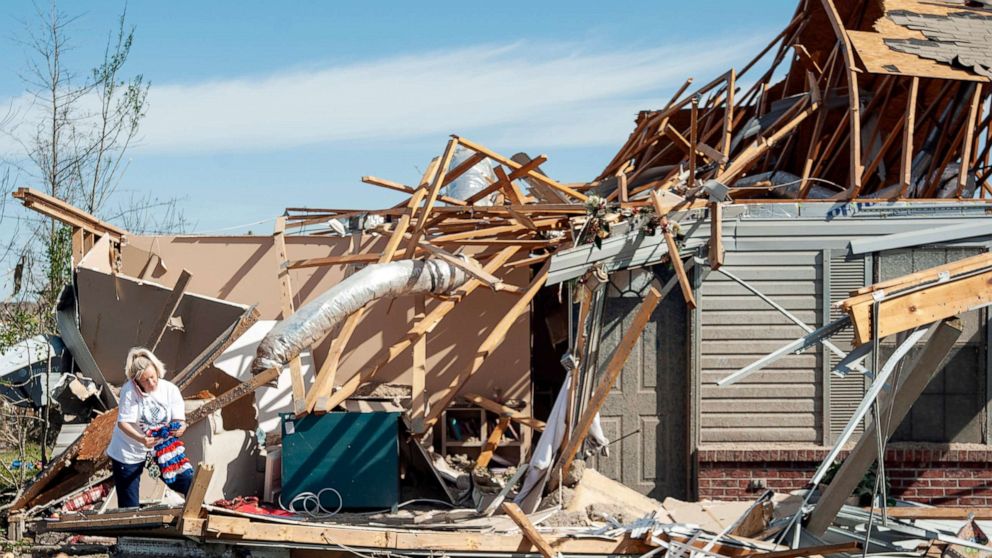Watch Out For Damaging Winds: A Guide To Fast-Moving Storm Safety

Table of Contents
Understanding Fast-Moving Storms and Damaging Winds
Fast-moving storms, such as derechoes (widespread, long-lived wind storms) and severe thunderstorms, are characterized by their intense, damaging winds. Wind speed, duration, and the presence of other severe weather elements like hail and tornadoes, determine the extent of the damage. High winds can easily uproot trees, damage roofs, shatter windows, and even topple entire structures. Understanding the characteristics of these storms is crucial for effective preparation and response.
Identifying Warning Signs
Recognizing the warning signs of an approaching fast-moving storm can significantly improve your chances of staying safe. Pay close attention to these indicators:
- Sudden shifts in wind direction and speed: A noticeable increase in wind velocity or a dramatic change in direction can signal an approaching storm.
- Dark and ominous clouds: Dark, heavy clouds, often accompanied by a greenish tint, are a strong indication of severe weather.
- Rotating clouds (funnel clouds): While not all rotating clouds lead to tornadoes, their presence warrants immediate attention and action.
- Hail: The presence of hail, especially large hail, is often a precursor to damaging winds.
- Changing weather patterns: Rapidly changing weather conditions, such as a sudden drop in temperature or barometric pressure, can indicate the approach of a severe storm.
Monitoring official weather reports and alerts from sources like the National Weather Service (NWS) is paramount. Sign up for weather alerts on your phone and utilize weather radio for up-to-the-minute information.
Preparing Your Home for Damaging Winds
Preparing your home and property before a storm hits is essential for minimizing damage and ensuring your safety. Proactive measures can greatly reduce the impact of powerful winds.
Securing Your Property
Take steps to secure your property before the storm arrives:
- Bring in loose objects: Bring inside any loose items that could become airborne projectiles, such as lawn furniture, garbage cans, toys, and potted plants. Secure anything that might be easily blown away.
- Trim trees and shrubs: Trim trees and shrubs around your home, removing any branches that could break and damage your property.
- Secure outdoor structures: Reinforce or secure any outdoor structures like sheds, gazebos, or awnings to prevent them from being damaged or blown away by high winds.
- Reinforce garage doors: Garage doors are often vulnerable to high winds. Consider reinforcing them or adding extra bracing.
Creating a Safe Room
Designating a safe room in your home is crucial for protection during a severe storm. Ideally, this should be an interior room on the lowest level of your house, away from windows and exterior walls. Stock your safe room with essential supplies:
- First-aid kit
- Water (at least one gallon per person per day)
- Non-perishable food
- Flashlight and extra batteries
- Battery-powered radio
- Important documents (insurance policies, identification)
Staying Safe During Damaging Winds
During a fast-moving storm with damaging winds, your priority is staying safe.
Actions to Take During a Storm
- Stay indoors: Remain inside a sturdy structure, away from windows and doors.
- Avoid windows: Stay away from windows and exterior walls to minimize the risk of injury from broken glass or flying debris.
- Stay away from outside walls: These walls are most vulnerable to damage from high winds.
- Turn off utilities if instructed: Follow instructions from authorities regarding turning off gas, electricity, and water.
- Monitor weather reports: Continue to monitor weather reports and heed any warnings or instructions from emergency officials.
- Communicate with family and friends: Let loved ones know your location and safety status.
Emergency Procedures
Know your emergency procedures in case of power outages, flooding, or the need to evacuate. Have emergency contact numbers readily available, and be familiar with your evacuation routes. If you have pets, plan how you will transport and protect them in an emergency.
Post-Storm Safety and Recovery
After the storm passes, carefully assess the damage and take necessary steps for recovery.
Assessing Damage
Inspect your property carefully for damage, starting with a visual check from a safe distance. Be cautious of potential hazards, including downed power lines, broken glass, and unstable structures. Never enter a damaged building until it has been inspected by professionals.
Reporting Damage and Seeking Help
Report any damage to the appropriate authorities, including your local government, insurance company, and utility providers. Numerous resources are available to assist with repairs and cleanup, depending on the extent of damage.
Conclusion:
Damaging winds pose a serious threat, and understanding fast-moving storms, preparing your home, staying safe during a storm, and planning for post-storm recovery are crucial steps in protecting yourself and your property. Don't wait for the next powerful wind event; prepare your home and family today with these essential safety tips to protect yourself from damaging winds. Take these steps seriously; your safety and the safety of your loved ones depend on it. Remember to prepare for destructive winds and high winds by following these guidelines.

Featured Posts
-
 Eyresi Efimereyonton Iatron Stin Patra 12 And 13 Aprilioy 2024
May 21, 2025
Eyresi Efimereyonton Iatron Stin Patra 12 And 13 Aprilioy 2024
May 21, 2025 -
 Overcoming Challenges During A Screen Free Family Week
May 21, 2025
Overcoming Challenges During A Screen Free Family Week
May 21, 2025 -
 John Cena And Randy Orton A Potential Dream Match Bayleys Injury Status
May 21, 2025
John Cena And Randy Orton A Potential Dream Match Bayleys Injury Status
May 21, 2025 -
 Wtt Star Contender Chennai 19 Indian Paddlers Create New Milestone
May 21, 2025
Wtt Star Contender Chennai 19 Indian Paddlers Create New Milestone
May 21, 2025 -
 Its A Girl Peppa Pigs Family Grows
May 21, 2025
Its A Girl Peppa Pigs Family Grows
May 21, 2025
Latest Posts
-
 Sam Cooks England Selection Zimbabwe Test Debut
May 23, 2025
Sam Cooks England Selection Zimbabwe Test Debut
May 23, 2025 -
 Unraveling The Cobra Kai Karate Kid Continuity A Comprehensive Guide
May 23, 2025
Unraveling The Cobra Kai Karate Kid Continuity A Comprehensive Guide
May 23, 2025 -
 Cook Selected In England Squad For Zimbabwe Test
May 23, 2025
Cook Selected In England Squad For Zimbabwe Test
May 23, 2025 -
 Cobra Kais Karate Kid Legacy A Deep Dive Into Continuity
May 23, 2025
Cobra Kais Karate Kid Legacy A Deep Dive Into Continuity
May 23, 2025 -
 England Name Sam Cook For Zimbabwe Test Match
May 23, 2025
England Name Sam Cook For Zimbabwe Test Match
May 23, 2025
